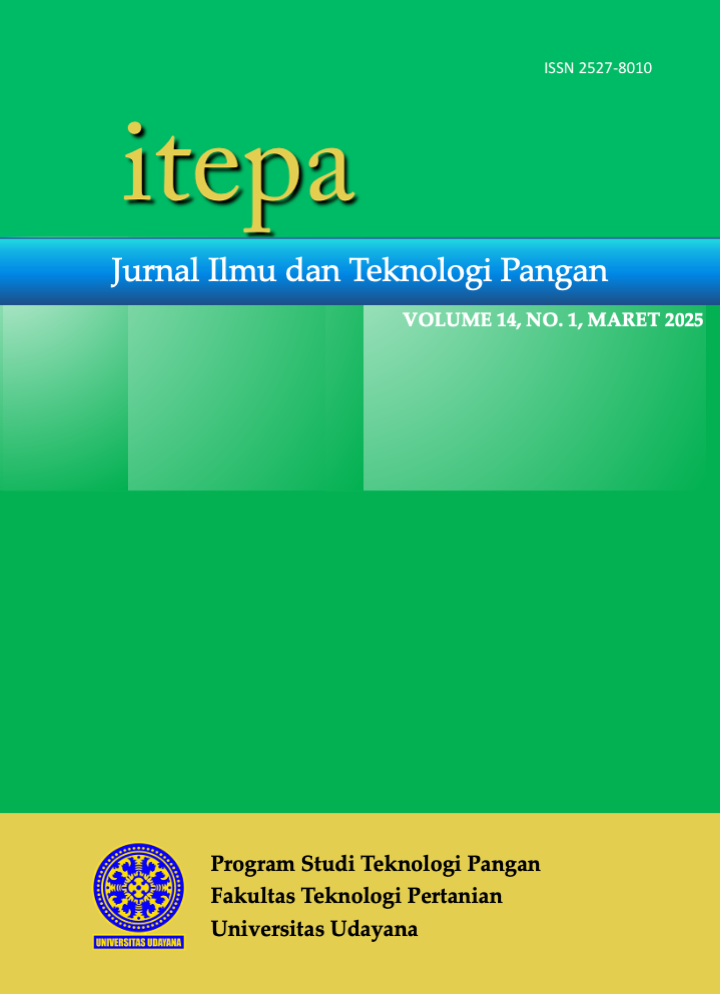Potensi Tepung Daun Pepaya Jepang (Cnidoscolus Aconitifolius) Sebagai bahan Baku Pangan Fungsional: Analisis Aktivitas Antioksidan dan Serat Pangan
Analisis Aktivitas Antioksidan dan Serat Pangan
Abstract
This study aims to determine the potential of Japanese papaya leaves in the form of flour by analyzing antioxidant activity (IC50) and dietary fiber content. The design used in this study was a Completely Randomized Design (CRD) with two factors. The first factor is the drying temperature with 3 (three) treatment variations (45oC, 55oC, 65oC) and the second factor is the drying time with 4 (four) treatment variations (4 hours, 5 hours, 6 hours, and 7 hours). Each combination of treatments will be repeated 3 (three) times so that 36 experimental units will be obtained. The data obtained from this study will be analyzed using the Analysis of Variance (ANOVA) statistical method and continued with Duncan's multiple tests if there is a significant difference (p ? 0.05) between treatments. The best treatment from this study can be used as a reference for functional food raw materials rich in antioxidants and dietary fiber, both as the main raw material and as a substitute material. The results showed that the treatment of various drying temperature treatments and drying times had a very significant effect (P <0.01) on antioxidant activity. Treatment A1B3 (temperature 45oC, time 6 hours) showed the highest results for antioxidant activity parameters of 93.67 ppm. The highest dietary fiber content value was obtained in treatment A3B3 (temperature 65oC, time 6 hours) which was 20.91%
Keywords: Japanese papaya leaves, flour, antioxidants, dietary fiber, functional food





